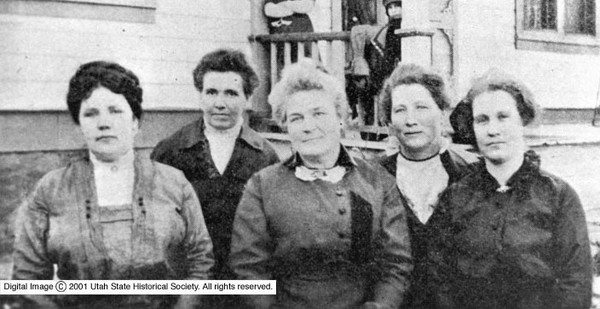Dublin Core
Title
Description
Women in the southern Utah town of Kanab made history- and a difference- in 1912. The entire town board was comprised of women, and their agenda was to make Kanab a better place to live.
In January 1912, the southern Utah town of Kanab made history when its newly elected mayor and city council took over governance of the small farming community. It was reportedly the first time in US history that an entire town board was comprised of women. Mayor Mary Elizabeth Woolley Chamberlain headed the board of five women, and their agenda to make Kanab a better place to live gives a glimpse into small town life during this time.
To protect local merchants, they increased the license fee for travelling salespeople. They prohibited the use of slingshots in town to protect birds from thoughtless youth, and passed laws to prevent cattle, horses, and stray dogs from running loose. A board of health was charged with inspecting stockyards for cleanliness, and fines were imposed on anyone who let waste water run down the streets. The cemetery was surveyed, bridges were built over town ditches, and a large dike was constructed to protect the town from flooding. They even declared September 12, 1912, as "Stink Weed Day" and awarded prizes for the best clean-up jobs in town.
The women shouldered the responsibility for protecting Kanab’s morals as well. They outlawed horse races, foot races, ball games, and all other "noisy sports" on the Sabbath. They also made Kanab a "dry" community with a strict antiliquor ordinance, in keeping with the national trend toward temperance.
The board spent an active two years in office, leading some supporters to claim that they had done more for Kanab than all the previous boards combined. Toward the end of their term, Mayor Chamberlin noted that prior to the women's election, most of the townsfolk did not even know who the members of the board were. In contrast, she asserted, even the children know all the names of the female board, and they are discussed "in every home for good or ill."
When urged to run again, the women declared, "When everyone else in town has had a trial, we'll take another turn." With that, the Kanab town board returned to male domination in 1914, bringing an end to the history-making female rule.
Creator
Source
Image: The 1912-1914 Kanab town council was headed by Mayor Mary Elizabeth Woolley Chamberlain and included Vinnie Jepson (later replaced by Ada Seegmiller), Tamar Hamblin, Blanche Hamblin, and Luella McAllister. #00161. Courtesy of Utah State Historical Society.
_______________
See W. Paul Reeve, “Kanab Residents Chose Women to Run Their Town in 1912,” History Blazer, April 1995, a joint project of the Utah State Historical Society and the Utah State Centennial Commission, http://historytogo.utah.gov/; Mary W. Howard, "An Example of Women in Politics," Improvement Era, July 1914; Adonis Findlay Robinson, History of Kane County (Salt Lake City, 1970); Gayen and Tom Wharton, It Happened in Utah (Salt Lake City, 2nd ed, 2007).

